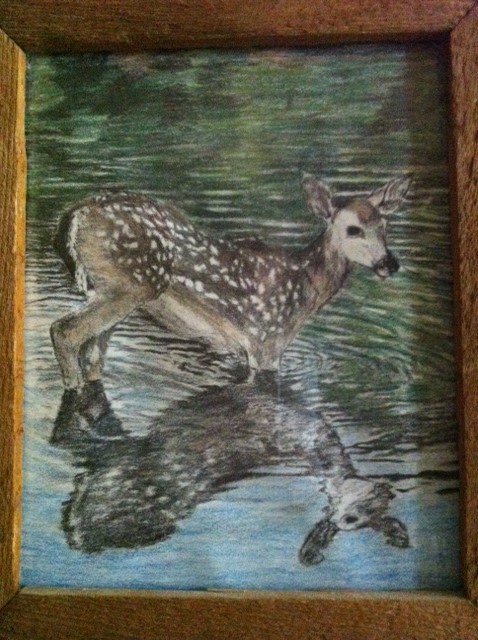It’s open deer season for about another month here in California, and many hunters are afield trying to shoot a buck. I just spent 5 days stillhunting for deer (plus squirrels and mountain quail) with my bow and arrows. I only saw a few does, so plan on an ambush-style hunt next time. Common modern methods include sitting in a blind at an area deer are known to visit, stillhunting/stalking, luring with calls, decoys, and scents, and perhaps most effective of all, group drive hunts.
The California Indians employed all this methods, and had many more elaborate and clever ways of capturing deer. They often disguised themselves as deer, taxidermied head with antlers and all, imitating a grazing deer while approaching, getting as close as inside the herd if necessary before shooting several before they could all escape. Such a method is risky now since other hunters are liable to see and shoot you. The Indians usually knew everyone in the area and when and where they were hunting, and were also probably more able to distinguish a imitator from a real deer. The Indians also used snares to catch deer, sometimes made from the fine edges of the leaves of Iris douglasiana.
Group drive hunts of many varieties were the norm among California Indians, and such hunts probably served to provide the majority of the deer meat and other products throughout the year for most tribes. Modern hunters do group drive hunts; they post half the hunters in a line at a good shooting spot, then the other half walks spread out in a line, driving deer toward the posted line. The Indians often did this with the posted line on the opposite side of a creek, shooting the deer as they crossed the water and were in the open and vulnerable while swimming. Shooting animals near watering areas is illegal in California now, but other natural or artificial formations can assist in a drive hunt. The Indians in the Mendocino County area of California used a long fence of maple bark to form a trap line to direct deer to a central spot to be killed by hidden hunters there.
The inner bark of bigleaf maple (Acer macrophyllum) was used to make a deer trap, being cut into bands about an inch wide, and fastened together for over a mile long into a continuous roll, which was then carried to the appropriate spot, and the band strung on stakes about four feet high to create a very long V-shaped fence, with the apex extending into a valley and the ends terminating at the mouth of two adjacent canyons (Chesnut 1902). This location was chosen for its excellent browse with deer known to feed there (Chesnut 1902). When the fence was strung taut, and deer were feeding inside the V, Indians disguised like animals, and each carrying brittle sticks, a piece of smoldering oak, and a bone dagger were stationed at the end of the lines and in the middle, and some then stealthily approached the deer from the open part of the V (Chesnut 1902). If deer came near the band of maple, one of the Indians would shake the band, frightening the deer back, and if deer attempted to pass an approaching man he would break a stick, or expose the glowing oak bark (Chesnut 1902). In this manner, the deer were corralled into the apex of the V, where the Indians would suddenly jump up and kill the deer with bone daggers (Chesnut 1902).
A maple band seems easily replaced with metal or plastic banding that similarly made an alarming noise when rattled. Since making a long band of inner bark of maple is the most time-consuming part of this method, modern hunters might profitably mimic this method to legally hunt deer. Of course the bone daggers would need to be replaced with bow or firearms legal for taking deer.
The deer provided a principal meat source for California Indians, and provided bones, antlers, hide, sinew, brains, and hoofs to make dozens of essential daily tools of the Indians. Colonists stove to extirpate all predators they encountered, so in current times, deer overpopulation is a major problem throughout California and the US. Hunters, especially deer hunters, are the number one group of (financial) supporters of conservation in the US. So do your job to help conserve more public lands such as our National Forests and BLM lands and keep the deer populations at healthy numbers for them and the ecosystem by buying a hunting license and deer tags and feeding your family the healthiest and cheapest meat in the world!


